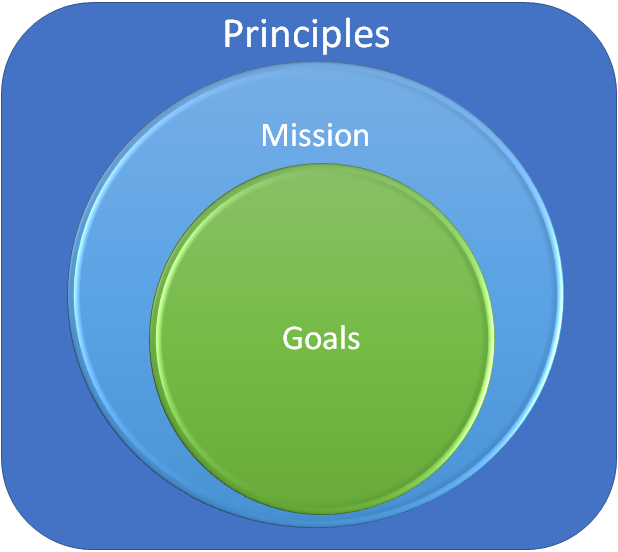 Peter Drucker writes in his book that doing the right thing is one of the primary attributes of the “Effective Executive“. But how do we know that what we’re doing is the right thing at the right time?
Peter Drucker writes in his book that doing the right thing is one of the primary attributes of the “Effective Executive“. But how do we know that what we’re doing is the right thing at the right time?
In an ideal world, principles should inform and guide everything we do. We can think of principles as a sort of operating system, the context in which we execute for our organisations. To be principled has a moral, personal meaning, as in the OED definition:
(of a person or their behaviour) acting in accordance with morality and showing recognition of right and wrong
and a systemic definition:
(of a system or method) based on a given set of rules.
‘a coherent and principled approach’
In my opinion, both of these are really important in a corporate context.
There are many examples of principles being used to describe a set of behaviours and approaches. One of the most topical and currently well-known is Ray Dalio’s “Principles: Life and Work“, in which he lays out a system that he uses in his personal and work life. He doesn’t specify these as the only, or even the right, principles – instead he provides them as an exercise for the reader to develop their own to live by.
Numerous articles on the web cite other leadership and management principles by which we can be successful. In this area I humbly agree with Ray Dalio – we each need to determine the principles that are relevant to us and our situation, make them transparent, and live by them. Having an in-built set of rules helps with consistent decision-making and gives us a hopefully data-driven approach to move forward from.
From a corporate perspective, Amazon Web Services are very clear about the Leadership Principles that they operate by, and expect new hires to aspire to. This includes probably their most famous – “Customer Obsession”, which drives their entire operating model.
Various military organisations worldwide have articulated principles of operation. For example, the British Army states its Principles of War in the Army Field Manual, the first of these principles being “Selection and Maintenance of the Aim”, which here I’m choosing to treat as being equivalent to Mission.
(Before going further, let me make it clear that I’m not a big fan of “mission statements” – the buzzword-bingo minefields where meaning goes to die.)
When setting a Mission we should be guided by our principles. While our missions change over time, our guiding principles should remain more or less constant. As long as our principles have been chosen authentically, with the right inputs, they should inform our mission-setting and drive execution – maintenance of Aim, in the MoD’s terminology.
Missions should be clearly articulated, digestible by all, time-bound (although that time period may be very lengthy) and can be strategic or tactical. This means that everyone in the organisation should be able to understand, take on board and know their role in delivering against the mission or missions that are relevant to their level of the hierarchy.
Missions then drive Goals – or more correctly, goals are derived from the mission. Again, if the mission has the right inputs, based on principles, the goals derived should be in line with the needs of the organisation. If the goals don’t support the mission they are the wrong goals. If they are not executed in the context of the organisational principles, they can lead to a clash with the organisational culture, causing confusion, identity issues and even potentially reputational damage.
This to me is the intersection point I started with – drilling down to goals from missions, informed and driven by principles. And this is hopefully the point at where the right thing is happening consistently; execution of appropriate goals in support of the mission, driving the organisation forward.
|
|

